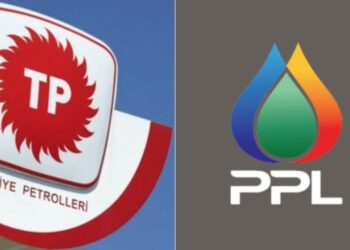Decision reflects easing inflation to 4.1%, Which
is attributed to subdued domestic demand
favorable conditions, and a positive base effect
Business Reporter

Karachi: The State Bank of Pakistan’s (SBP) Monetary Policy Committee (MPC) slashed the policy rate by 100 basis points to 12%, effective today. The decision reflects easing inflation, which fell to 4.1% year-on-year in December. This trend is attributed to subdued domestic demand, favorable supply-side conditions, and a positive base effect.
The MPC anticipates inflation to dip further in January before gradually rising in the coming months. While core inflation has eased, it remains elevated. High-frequency indicators reveal gradual economic improvement, and the MPC expects the impact of the 1,000 bps rate cut since June 2024 to further bolster economic activity.
Key Economic Developments
- GDP Growth: Real GDP growth in Q1-FY25 was lower than projected, with agriculture sector growth sharply decelerating to 1.2% compared to 8.1% in the same period last year. Industrial growth showed resilience, driven by textiles, food, and automobile sectors.
- External Sector: The current account posted a $0.6 billion surplus in December, supported by robust remittances and export earnings. Imports also increased, reflecting rising economic activity. The SBP’s foreign exchange reserves are expected to surpass $13 billion by June 2025.
- Fiscal Sector: Tax revenues rose by 26% in H1-FY25 but remained below targets. Contained expenditures have helped improve fiscal balance, though achieving the primary balance target will be challenging.

Inflation Outlook
Headline inflation eased to 4.1% in December, driven by reduced electricity tariffs, stable food prices, and currency stability. However, the MPC warned of near-term volatility, with inflation projected to rise toward the upper limit of the 5–7% target range by FY25-end. Key risks include global commodity price volatility, energy tariff adjustments, and revenue-enhancing measures.
Positive Momentum in Economic Activity
High-frequency data indicates improvement in automobile, fertilizer, and petroleum sales. Business confidence has remained positive, with GDP growth expected to range between 2.5% and 3.5% for FY25.
External Sector Performance
Exports, particularly in high-value-added textiles, maintained strong momentum. Imports showed broad-based growth, pointing to an uptick in economic activity. Remittances offset the trade deficit, significantly improving the current account outlook.

Monetary Policy Implications
The MPC emphasized the need for a cautious policy stance to maintain price stability while supporting sustainable growth. With inflation risks persisting, the committee stressed the importance of keeping the real policy rate adequately positive.






















